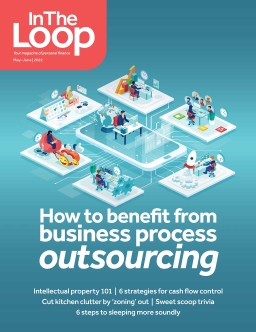Hybrid team management

If your business is relatively new to the remote workforce, you may have experienced a few struggles finding effective ways to collaborate. However, if you have a hybrid team—one where some employees work at a centralized, onsite location and others don’t—that can throw a whole new level of complexity into your team management efforts.
There are several key issues to be aware of if your business has a hybrid team. The following list of priorities can help keep things running smoothly, wherever your employees are located:
Allow for varying employee needs
Your team members have different lifestyle needs. Some have children and contend with online learning or limited or no childcare. Other team members may have health issues to navigate. And others may have issues with being at the office while working with others who are not.
Manage equitably
The circumstances mentioned above can create issues that make it difficult to treat everyone the same way. Consider protocols that help to close the gap between employees in the office and those working from home (i.e., ensure everyone works the same schedules as appropriate and that everyone attends combined meetings to keep the entire team in the loop).
Avoid the “us versus them” mentality
This requires ongoing positive communication, team engagement and coordination of priorities. Unresolved resentments and communication issues can be compounded by COVID-related anxiety, which can add even more stress and complexity to working arrangements. It’s critical to offer support and solicit ideas from your team to make sure they remain cohesive no matter where they work.
Get to know each team member
While it’s easy to put personal relationships with your team on the back burner because you’re busy, it’s essential to make this a priority with a hybrid team—or risk creating a scenario where your remote workers feel left out. Make a point during emails and other communications (including team video meetings) to ask everyone about their individual challenges, successes and personal goals.
Set positive and consistent expectations
It’s important to involve your team in creating new practices and protocols to support your work—because it could mean the difference between an effective team and one that becomes dysfunctional. Set guidelines for communication expectations, including when to use which channel, and also for how employees' work hours will be structured.
Remain aware of your team’s progress
Watch for any signs of burnout or dips in productivity. Also, take a regular temperature check on moods, motivations and feelings about the progress being made towards shared goals. Build a sense of community with regular meetings and occasional treats such as snacks and gift cards or other incentives when goals are met or exceeded. Be sure to identify great performance when it happens so everyone, near or far, feels valued.
As we’ve seen in this brief list of potential issues, effectively managing a hybrid team is not easy. However, these Dos and Don’ts from Harvard Business Review can help you navigate them more effectively:
Do…
-
Set clear priorities and objectives so everyone on your team focuses on what’s most important.
-
Be inclusive. Even if some people are in the office, hold all-team meetings online to be fair to everyone.
-
Reflect on your biases and predispositions. Ask yourself, “Are there people on my team whom I haven’t given a fair shake? And what would it look like if I did?”
Don’t…
-
Be rigid. Right now, the future is unpredictable, and everyone needs to be flexible.
-
Ignore signs of stress from your team. Be empathetic. Help people prioritize what’s important.
-
Forget about fun. Look for ways to enjoy connecting with your team and bring some playfulness into the workday.
Hybrid teams can be highly effective and may be the way of all future work arrangements. Do the best you can, ask for feedback often, and remember that reaching out to other business owners or HR professionals can help you get new ideas and inspiration for keeping your team’s motivation high and the frustrations low.
Back to issue








